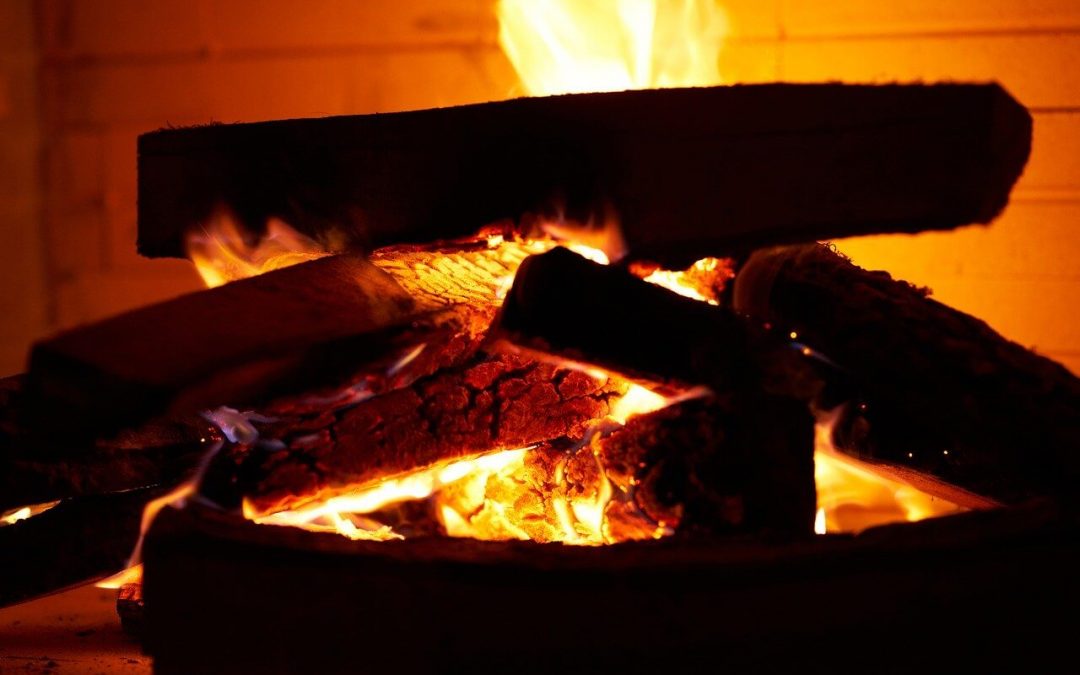A fireplace provides an efficient heat source for your home. Even if the power goes out, you can still heat the living spaces with fire. If you plan to have indoor fires this winter, you’ll need to prepare your fireplace. Here are a few ways to keep your fireplace safe so you can enjoy it all winter long.
Cleaning and Inspection to Keep Your Fireplace Safe
Before starting a fire this season, hire a reputable company to inspect your fireplace and chimney. Have the chimney cleaned to clear any leaves, creosote, animal nests, or other debris that may lead to a chimney fire.
These steps are necessary to make sure your fireplace and chimney can safely accommodate a fire. The chimney sweep may point out areas that need maintenance or repair. Inspections are recommended at least once every year or after about 80 fires.
Repair the Fireplace
Check the chimney cap to see that it is securely in place. Open and close the flue to make sure it is functioning. If the flue is stuck, have it repaired before starting a fire. It is necessary that the flue opens completely to allow good ventilation and prevent smoke and carbon monoxide from flowing back into your home.
Make sure your fireplace tools are clean and in good working order. Keep them near the fireplace so they are easily accessible. Inspect your fireplace screen for holes or damage before starting a fire, as it prevents sparks from flying into your living space.
Keep Your Fireplace Safe with the Right Fuel
Always use dry and seasoned hardwoods for the cleanest burn and to reduce creosote build-up in the chimney. Pine or softwoods produce more creosote, a large contributor to chimney fires. Don’t burn plastic or other synthetic materials, including wrapping paper, as these produce toxic fumes. Burning trash in the fireplace can be carried up with the smoke and ignite any creosote build-up in the chimney.
Lighting a Fire
When starting a fire, verify that the damper is open. This encourages proper airflow while drawing outside air in to help manage the temperature of the chimney. Once the fire is burning, cover the fireplace with a metal screen or glass doors to prevent sparks. Use a fire-resistant rug at the edge of the hearth to protect carpet or wood floors from escaped embers.
Before lighting a fire, test the smoke and carbon detectors around your home to make sure they are working. Keep burn times under 5 hours to prevent the chimney from overheating, unless you are using a wood stove.
Extinguish Your Fireplace Safely
The safest way to extinguish a fire is to wait for it to burn itself out. Don’t add any more wood and allow the coals to cool. Dousing the fire with water can cause steam and smoke to billow out into your home. This can also cause your chimney or fireplace masonry to crack from the sudden drop in temperature.
Embers can remain hot for a long time, so do not attempt to remove them until they have cooled for at least 48 hours. Sweep the cool ashes into a metal container and put them outside, away from your home. There may still be live embers present, so be cautious when you clean out the fireplace.
Close the flue and fire-screen and, if you have a glass fireplace cover, put it in place. Once the fireplace is closed and you are positive that there are no residual fumes or burning embers, it is safe to close the damper.
Be confident that you are keeping your fireplace safe this winter by following the above tips.
Cabal Inspection Services offers home inspections to homebuyers and sellers. Contact us to schedule our services.

